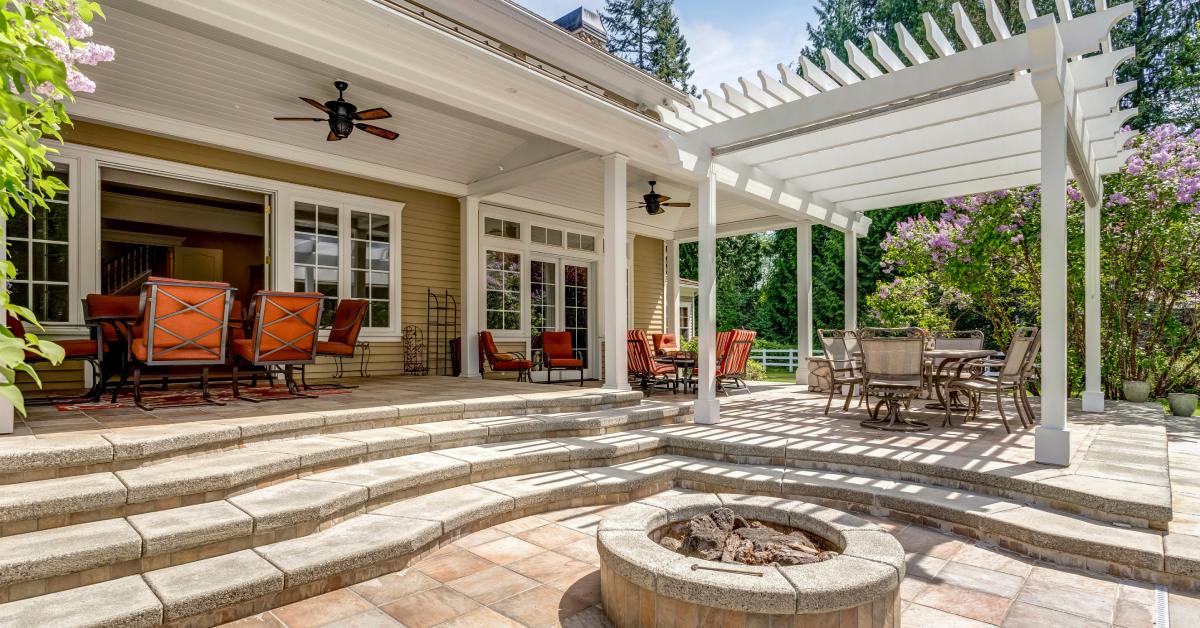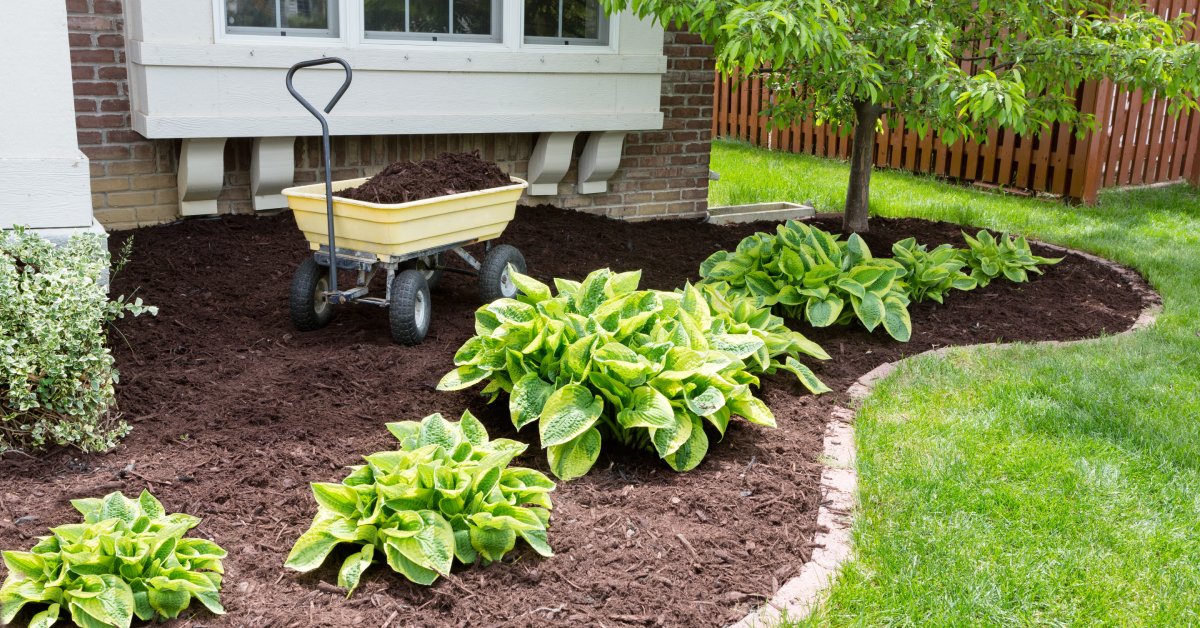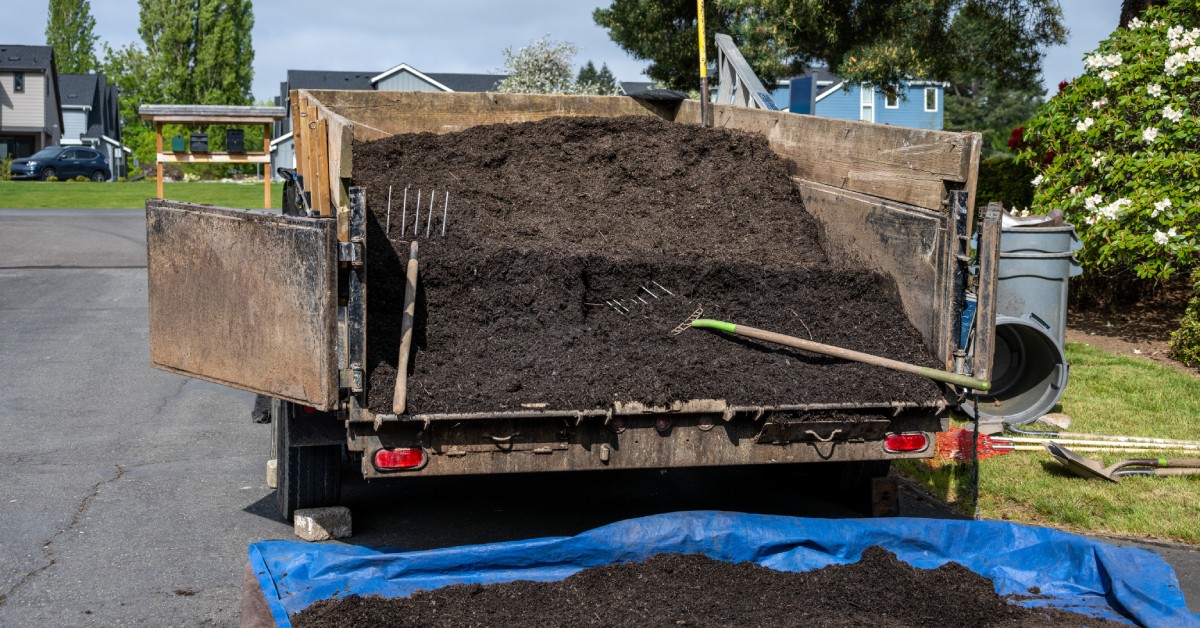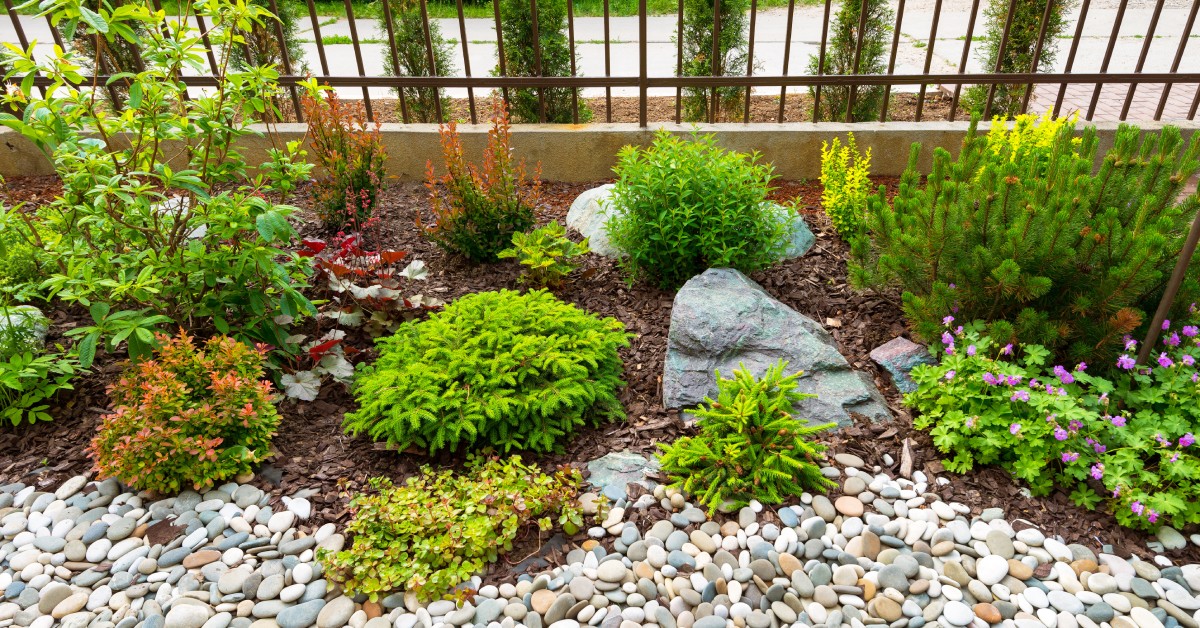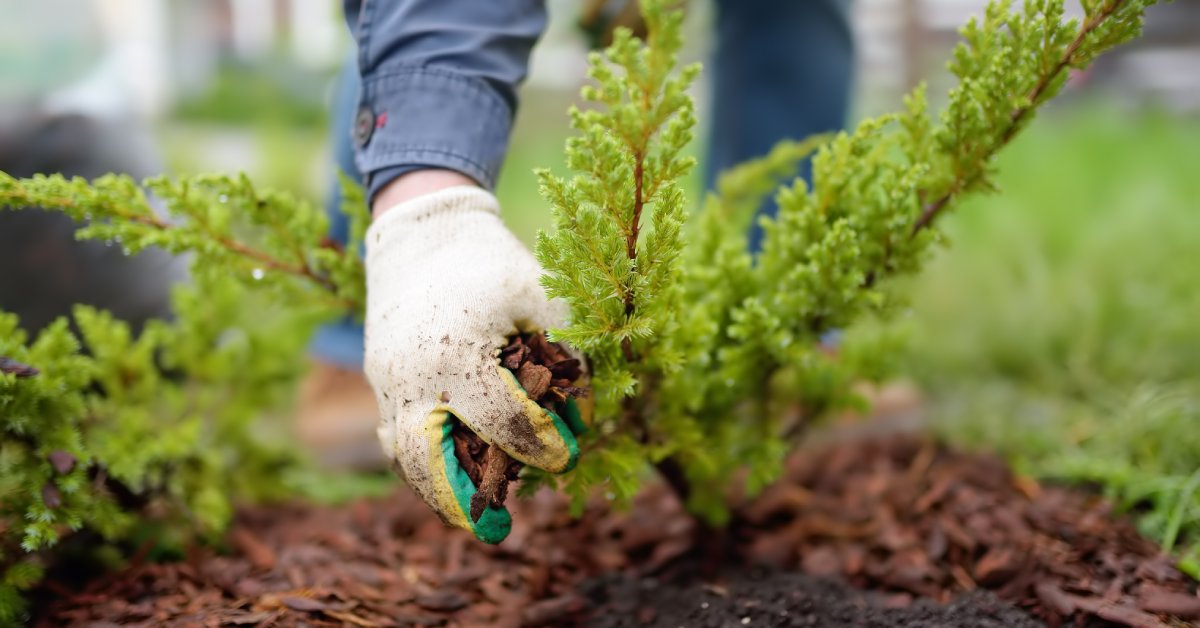Creating a thriving landscape starts with understanding how to combine materials effectively. Mulch, soil, and rocks serve unique purposes in your garden, and knowing how to mix them properly will transform your outdoor space. These practices will help you achieve professional results, whether you’re building new beds, refreshing existing areas, or tackling complete landscape renovation. Use our best practices for mixing mulch, soil, and rocks to get started on the right path.
Why Mix Mulch, Soil, and Rocks?
Combining these three materials offers multiple benefits for your landscape. Soil provides essential nutrients and a foundation for plant growth. Mulch retains moisture, regulates temperature, and suppresses weeds.
Rocks add drainage, prevent erosion, and create visual interest. When you blend them thoughtfully and correctly, you create an environment where plants can flourish while maintaining a beautiful, low-maintenance landscape.
How Much Soil Do You Need for Your Project?
Start by measuring your planting area in square feet. For new beds, plan on adding four to six inches of quality topsoil or garden soil. If you’re amending existing beds, two to three inches usually does the trick.
Here’s a simple calculation: multiply your area’s length by width to get square feet, then multiply by the depth in feet. Divide that number by 27 to convert cubic feet to cubic yards. Most landscape suppliers sell soil by the cubic yard, so this calculation will help you order the right amount without waste.
What Type of Soil Works Best With Mulch and Rocks?
Quality matters more than quantity when choosing soil. Look for rich, dark topsoil with visible organic matter. Garden soil blended with compost gives plants an excellent start. Avoid soil that looks clayey or sandy without amendments.
A good garden center in Boise like Victory Greens Stone will help you select soil that matches your specific plants and local conditions. The right soil drains well but still holds moisture, creating the perfect foundation for your landscape layers.
How Should You Layer Soil, Mulch, and Rocks?
Proper layering makes a significant difference in plant health and landscape longevity. Start with your soil layer at the bottom, ensuring good contact with native ground. Next, add two to three inches of mulch around plants, keeping it away from stems and trunks.
Finally, place rocks strategically for drainage or decorative purposes. This order allows water to penetrate the soil while the mulch conserves moisture. Rocks on the top help with drainage in problem areas or add texture to your design.
When Should You Mix Materials or Keep Them Separate?
Some situations call for mixing, while others work better with distinct layers. Mix compost or organic matter directly into soil before planting to improve structure and nutrients. Keep mulch and rocks in separate layers rather than blending them together.
Mixing rocks into mulch creates maintenance headaches and reduces the benefits of each material. However, you can transition between mulched areas and rock features by creating clean edges that prevent materials from migrating.
How Do You Prevent Mulch and Soil From Washing Into Rock Areas?
Erosion control starts with proper edging. Install landscape fabric or edging material between different zones. Create slight berms or borders to contain mulch and soil. For sloped areas, consider:
- Adding retaining walls or larger border rocks
- Using heavier mulch that resists washing
- Planting ground covers to hold soil in place
- Installing drainage channels to redirect water flow
What Mulch Work Best With Different Soil and Rock Combinations?
Wood chips and shredded bark work well in most situations as they break down gradually to enrich soil. Cedar and redwood mulches last longer and repel insects. For rock gardens or xeriscape areas, use smaller bark nuggets or even rubber mulch that won’t float away during watering.
Match your mulch color to your rocks for a cohesive look or create contrast for visual interest. Darker mulches help lighter-colored rocks stand out, while natural bark tones complement earth-toned stone.
How Often Should You Refresh Mulch in Mixed Landscapes?
Plan to add fresh mulch annually or every other year, depending on the type you choose. Organic mulches decompose over time, which enriches soil but requires replenishment.
Check your mulch depth each spring. If it has compressed to less than two inches, add more. Rake the existing layer lightly before adding new mulch to prevent compaction. Rocks rarely need replacement, though you may need to reposition them occasionally or rinse them clean.
Can You Grow Plants Successfully in Mixed Rock and Soil Areas?
Absolutely. Many plants thrive in environments that combine these elements. Amend the soil well before planting, creating pockets of rich growing medium within rock features. Alpine and xeriscape plants particularly enjoy this combination.
Make sure adequate soil depth for your chosen plants’ root systems. Most perennials need at least 8 to 12 inches of soil, while shrubs and trees require deeper planting zones. The rocks provide excellent drainage while the enriched soil delivers nutrients.
What Common Mistakes Should You Avoid?
Several pitfalls can undermine your landscaping efforts. Don’t pile mulch against plant stems or tree trunks, as this invites rot and pest problems. Avoid using too many different materials in one area, which creates a cluttered appearance.
Moreover, skip the landscape fabric under mulch in planting beds, as it prevents beneficial decomposition. Never mix different rock sizes randomly; this looks unfinished. Finally, don’t forget about drainage—even beautiful landscapes fail if water pools around plants.
How Do You Maintain Proper Drainage With Multiple Materials?
Good drainage protects your investment and keeps plants healthy. Create slight slopes that direct water away from buildings and toward drainage areas. Use larger rocks at the bottom of swales or drainage channels. Make sure your soil has adequate organic matter to prevent compaction.
Consider installing French drains in persistently wet areas. Test drainage after installation by watering thoroughly and watching how quickly water absorbs. Standing water after 24 hours indicates a drainage problem that needs attention.
Create Your Perfect Landscape Mix
Landscape success comes from understanding each material’s role and respecting those differences. Soil feeds plants, mulch protects and beautifies, rocks add structure and drainage. When you combine them with purpose and maintain them properly, your landscape will reward you with years of beauty and healthy plant growth.
Take time to plan your material placement, invest in quality products, and don’t hesitate to ask questions at Victory Greens Stone. We can help you mix mulch, soil, and rocks in ratios that will serve your landscape long-term. Stop by or call (208) 888-5551 to get started on your yard’s transformation.

